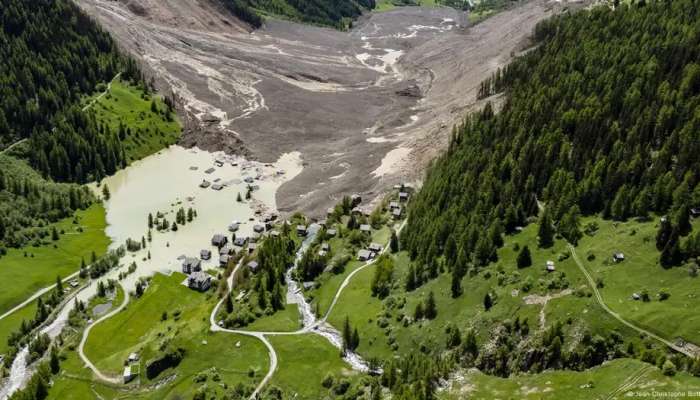
Blatten: The destructive landslide in the Swiss village of Blatten is the latest natural disaster to hit valley communities in the Alpine nation.
While Blatten was engulfed by a slick of icy sediment this week, early warnings of a potential landslide gave residents time to evacuate. Only one person — who chose to remain in his home — is currently unaccounted for. The search for him has been suspended.
Switzerland is an early warning success story.
Government agencies there use a broad range of technologies and methods to assess risks that could threaten lives and property.
This includes terrain mapping and continuous monitoring of rainfall, permafrost melt, groundwater levels, tectonic shifts and ground movement.
This data allows authorities to maintain hazard risk maps across the country.
"Every community in Switzerland that's affected by a hazard has a hazard map. They're federally mandated for the areas where people live," said Brian McArdell, a geomorphologist at the Swiss Federal Institute for Forest, Snow and Landscape Research (WSL).
In Blatten's case, officials issued alerts after a nearby rockfall destabilised the Birch Glacier.
Combined with warming summer temperatures, the glacier fractured. A slurry of ice, sediment and mud then roared down the mountain to the village below.
World's mountainous regions most at risk
Steep slopes, unstable terrain and exposure to high rainfall or permafrost melt put mountain regions more at risk of landslides and avalanches.
For valley communities in Switzerland, the potential for a landslide can mean entire towns need to be evacuated.
Following the Blatten landslide, several nearby communities remain on alert, including for potential flooding.
Brienz, a village around 25 miles (41 km) north of Blatten, is also preparing for possible evacuation. The town has faced repeated warnings and "near miss" rockslide events since 2023.
"In general, debris flow is a mixture of coarse and fine sediment — so everything from boulders, to mud, to very fine sediments and water," said McArdell.
"These events can occur quite suddenly and they're quite, quite dangerous."
Regions with the highest landslide-related fatalities globally include the Himalayas, parts of Central and South America, Italy and Iran.
The International Conference on Glaciers' Preservation is currently being held in Tajikistan, where Farinotti expects the release of a "Glacier Declaration" urging greater action to protect ice masses from the effects of climate change.
"[It will] call for various actions and, among others, it will call for increased preparedness against risk deriving from cryospheric hazards, so avalanches," he said.
Guzzetti also highlighted the UN's Early Warnings for All initiative, which aims to establish a global early warning system by 2027. If achieved, this could be a major step toward saving lives from natural hazards.
While wealthy nations like Switzerland have reliable infrastructure to warn communities of potential disasters, many others are still playing catch-up. According to UN figures, only 108 countries had the capacity for "multi-hazard early warning systems" last year though that is more than double the number from 2015.
The benefits are clear, said Guzzetti, pointing to the Blatten evacuation: "It seems that they were very good at evacuating the town in time, so that fatalities were nil, or very small."
"I think it points to the fact that we are moving in the right direction."